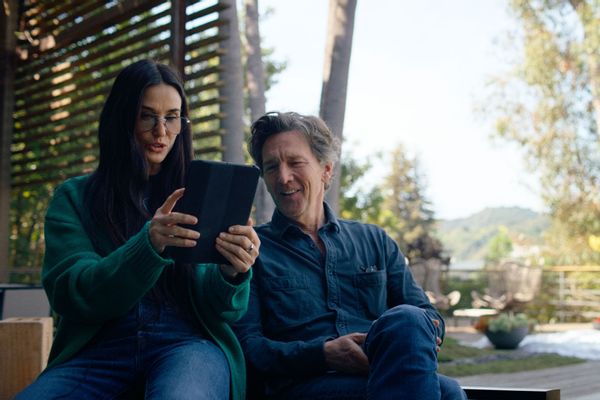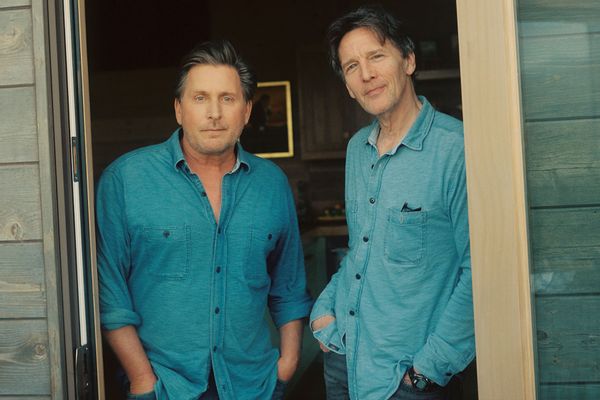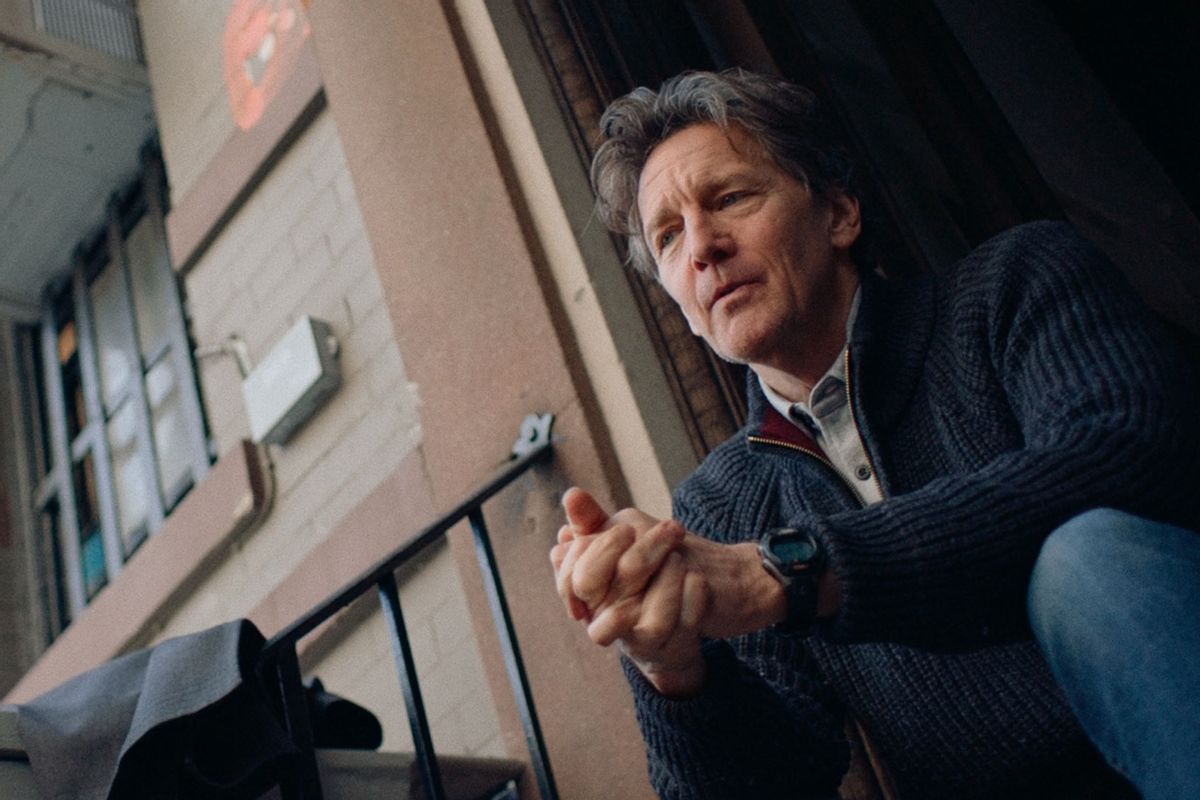About an hour into “Brats” we watch as Andrew McCarthy leans into the window of a Carpinteria, Calif., roadside burger joint called The Spot to order a cheeseburger with lettuce, tomato, onions and pickle.
We don’t see the (youthful, we assume) employee taking his order, but that person has noticed the cameras flanking McCarthy, or else they wouldn’t have asked what he’s filming. Just a documentary, the filmmaker says. About what? he’s asked, and after a bit of casual evasion, McCarthy says. “It's about a group of actors from the ‘80s called The Brat Pack. Do you know who they were?”
“I think . . . that sounds familiar,” the person says haltingly, trying to be polite.
“Yeah, there you go,” McCarthy concludes, as if the interaction makes the point of this exercise-meets-exorcism. “Ancient history.”
Most of McCarthy’s interactions leading up to that moment invite another skew on that moment, since “Brats” wouldn’t exist if that three-word sobriquet didn’t haunt the star so entirely.
The actor reached his version of peace in writing “Brat,” his 2021 memoir. But, as he explains, he never spoke with anyone else branded with the Brat Pack label, a very famous group of people whose movies and the characters they played in them influenced a generation’s image of themselves.
In crisscrossing the country (and California, mostly) to chat with fellow Brat Packers and adjacent actors like Timothy Hutton and Jon Cryer, McCarthy shows viewers an example of what it looks like to accept one’s cultural obsolescence gracefully.
Generation X has largely learned that lesson, I think. However, we still struggle to deal with it, alongside elder Millennials, for whom we’re skipped over in broad media analyses about cultural differences. This is strange when you consider that some of the biggest Hollywood stars are Gen Xers – Jada Pinkett Smith, Kristen Wiig, John Cena, Jason Momoa, and Jordan Peele, to cite a handful.
 Demi Moore and Andrew McCarthy in "Brats" (AMC)But if Millennials dominate conversations about the life’s scary graying phase, that’s partly because Gen Z is hitting them harder on TikTok and Instagram, where they came of age first.
Demi Moore and Andrew McCarthy in "Brats" (AMC)But if Millennials dominate conversations about the life’s scary graying phase, that’s partly because Gen Z is hitting them harder on TikTok and Instagram, where they came of age first.
Trust us — we can relate. On those platforms Gen X aren't merely your parents and grandparents. We’re low-key terrors who were allowed to run wild in the streets and drank out of garden hoses when we were thirsty. Like animals.
We're also the age group alleged by the popular media to have embraced irony and disillusionment with commercialism and the status quo, so if we are misunderstood or dismissed in the endless river of generational turnover, didn't we bring that on ourselves?
So any softer consideration of what our youth meant, and what its influences contributed to popular culture, is welcome in concept. “Brats” isn’t that, not really. Instead, and probably without meaning to be, McCarthy serves as our stand-in for a common crisis of meaning and validation at a time when the sheen of accomplishments fades more quickly than ever.
Reminiscence can be a balm as well as a trap, McCarthy’s “Brats” shows us.
I’m talking about Xers, but that sobering wake-up call isn’t limited to us. Confess, Millennials, if you shuddered the tiniest bit at the report that the Hamptons cop who arrested Justin Timberlake for driving under the influence was so young that he didn’t recognize the superstar. Timberlake is 43. Weren't we all told that's the new 33?
See? Obsolescence has come for you too. Relax. Enjoy the anonymity. Grab a burger.
It is helpful to the filmmaker and to us to consider what makes the so-called Brat Pack movies such durable pieces of popular culture, starting with the fact that they were the golden tier in a burgeoning group of movies that became the first to cater specifically to the American teen and 20-something experience.
Generation X, being the first to straddle the analog and digital age, experienced more pop culture in unison. There were only so many movies to see in a given year and a limited number of songs getting airplay on corporate radio broadcasts. No matter who you are, these movies likely represent some perception of either your adolescence or the supposedly common version Hollywood imagined for you.
Aside from Molly Ringwald, who declined to participate in “Brats,” everyone in McCarthy’s 1985 class is a Boomer. But the so-called Brat Pack films, which mainly refer to “St. Elmo’s Fire” and “The Breakfast Club,” were the gateway to an era of filmmaking that catered to 18-to-25-year-olds from the mid-'80s onward.
We need your help to stay independent
Fewer people think of Emilio Estevez, Rob Lowe, Judd Nelson, Demi Moore and Ally Sheedy in those terms today. Cryer, Ringwald’s “Pretty in Pink” co-star who firmly declares in the film that he is not a Brat Pack member, is known to most for being “Two and a Half Men,” in which he starred alongside Estevez’s brother Charlie Sheen, another non-Brat Packer.
But back in 1985 reluctant Brat Pack member Judd Nelson, along with Lowe and Estevez, were main characters in David Blum’s New York Magazine piece that coined the term. McCarthy was only mentioned in passing and in the most backhanded terms.
Regardless, for years McCarthy resented his membership card. “I just thought that was terrible instantly,” he admits in “Brats. “And it turns out I was right.” He goes on to call Blum’s phrase “clever” and “witty”: “It caught the zeitgeist instantly and burned deep, and that was it,” McCarthy said. “From on my career and the career of several other people was branded, without any wiggle room, as the Brat Pack.”
What's so bad about that? Nelson, who doesn’t appear in “Brats” either, has pointed out recently that the term’s taking hold forced this chemistry-rich ensemble to scatter while stars like Matt Damon and George Clooney joined forces in many projects with great success.
Still, McCarthy’s career chugged along better than others. He went on to star in respectable movies that were not specifically Brat Pack-related, including “Less Than Zero.” He’s also the co-lead in the “Weekend at Bernie’s” movies, and he signed on to “Mannequin” for whatever reason.
The career experience shaping “Brats” more intimately than his time as an ‘80s lead, however, is his episodic directing work. McCarthy understands the power of ordering a narrative in a way that allows people to travel beside the protagonists as they journey from irritating bafflement to epiphany. That direction lends “Brats” more heft than the standard nostalgia stroll through a specific time and place, 1980s Hollywood in this instance.
Anyone can experience that era (or the idea of it) from the outside thanks to myriad books, specials and academic analyses. McCarthy, along with Estevez, Lowe, Moore, Lea Thompson, Timothy Hutton and others, bring us into the emotional turmoil of being inside the craze, some of which is a bit self-aggrandizing but is largely leveling.
Yesterday McCarthy was a teen heartthrob yearning to be taken seriously, but for whatever reason he couldn’t age into elder statesman status. Some of his peers revived their profiles by landing hit TV shows or steered their careers beyond the label in other ways. He's the guy who earned the Most Likely to Succeed superlative and did well in life as an actor, director and writer, but is bothered by the nagging suspicion that he'd have done even better if not for this single phrase that altered his fortunes.
Want a daily wrap-up of all the news and commentary Salon has to offer? Subscribe to our morning newsletter, Crash Course.
Reminiscence can be a balm as well as a trap, McCarthy’s “Brats” shows us. This is cemented when at long last he meets Blum, who is both sympathetic and unapologetic.
 Emilio Estevez and Andrew McCarthy in "Brats" (AMC)The writer reminds McCarthy that they were all adults when he spent a few days with Estevez, Nelson and Lowe four decades ago, observing them while they drank beers . . . at the Hard Rock Café, of all places. That burger restaurant chain used to be the apex of cool. No longer.
Emilio Estevez and Andrew McCarthy in "Brats" (AMC)The writer reminds McCarthy that they were all adults when he spent a few days with Estevez, Nelson and Lowe four decades ago, observing them while they drank beers . . . at the Hard Rock Café, of all places. That burger restaurant chain used to be the apex of cool. No longer.
“I think that we have no control of how we’re remembered,” Emilio Estevez tells McCarthy. “The toothpaste is out of the tube. It’s not coming back.”
Instead, we can rewind and weigh what was and what that once meant to others, not just ourselves. This is where McCarthy lands after almost 40 years of hanging on to this small bitterness, looking a little lighter for having let it go.
As Moore sagely counsels him, “The event is the event. What we make it mean is the value that it all of a sudden has.” In today’s terms, that’s ancient history – and as people of all ages say of their prime, wasn’t it a special time to live through?
"Brats" is currently streaming on Hulu.



Shares